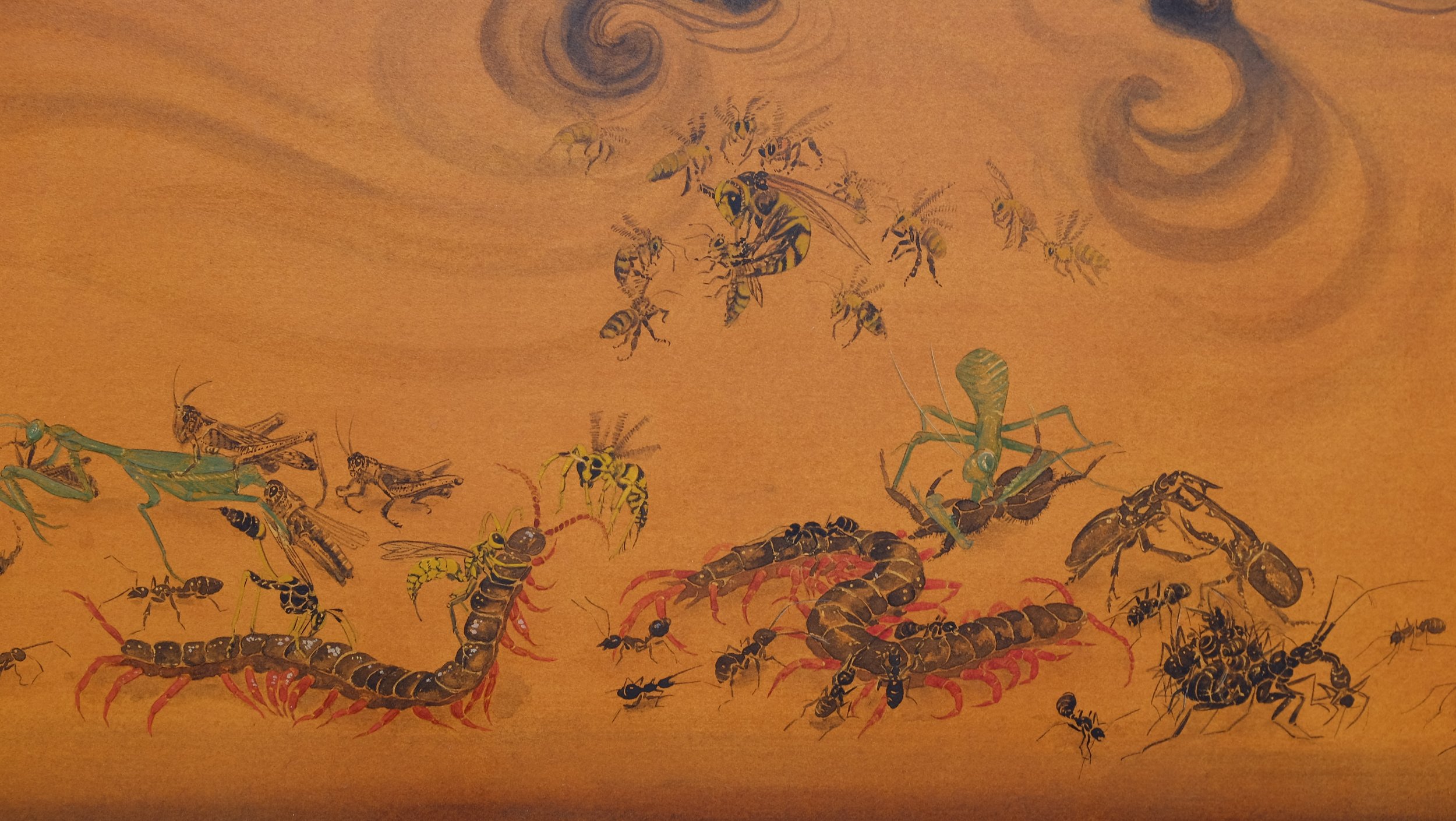Details ““Bug war”, 2023
7 years ago, I had the opportunity to stay in Japan for 3 months and concluded with a memorable farewell trip to Mount Koya, where I spent a few nights in a temple. It was during this period that I stumbled upon “In Praise of Shadows”, a book that laid the foundation for my aesthetic sensibility. Until that moment, I never quite understood why my heart gravitated towards the obscure, the mysterious, the unseen, the unknown. To this day, I’m still delving deeper into this inexplicable inclination. However, this book provided some insights and guided me on where to excavate further.
For years, I painted primarily watercolor on a pitch-black background, believing it to be a representation of darkness. Yet, I have come to realize that darkness transcends mere blackness. The shadow can trigger fear, but it doesn’t mean that it is malevolent. Sinister is the invisible darkness that conceals itself within the blindness of the light. Crimes unfold under the bright sun, like a spotlight, with people cheering as calamity befall, treating it as if it were a play, while their lives carry on.
I’m often asked about the mythological basis of my art, given my extensive inspiration from ancient art and mythological figures. While some of them, indeed, rooted in specific stories, most borrow symbolism to convey a narrative. My aspiration is to paint in the old manner, yet my stories will always remain contemporary. The narrative in the works of the old masters were relevant in their time, and replicating their aesthetics without adapting to present climate would be mere emptiness. While certain elements such as war and nature remain universal, the challenges we face today - such as immigration crisis, energy war, ecological collapse, etc – are the contemporary narrative that requires adaption while carrying on our heritage.
Details “God of Longevity contemplating the doom of humanity”, 2023
These days, I have been contemplating the role of art in times of unrest. Sometimes it feels like a dose of anesthetic, an amnesia. It can also be manipulated as a tool of propaganda to perpetuate the illusion of war, glorifying self-sacrifice for nationalism. What is the role of art when hell breaks loose? How can art respond to the abhorrent horror of war and subsequent crisis? What is the narrative it reveals in the face of gruesome reality?
Going through artworks addressing the context of war, I think art’s initial role is to bear witness.
The age-old debate on whether humans are inherently good or evil still resonates until today. I’m leaning towards the latter, as Xunzi suggested, “The nature of man is evil; his goodness is only acquired training.”
Goodness is like a fragile plant that’s crushed easily under the stomp of evil nature.
And what happens to one’s heart after prolonged exposure to darkness? Will darkness consume them? How long can they resist before falling to insanity?
I don’t know the answer to that. But I know as a witness, I gotta keep looking into the dark, searching for that frail gleam of the diamond of humanity.









